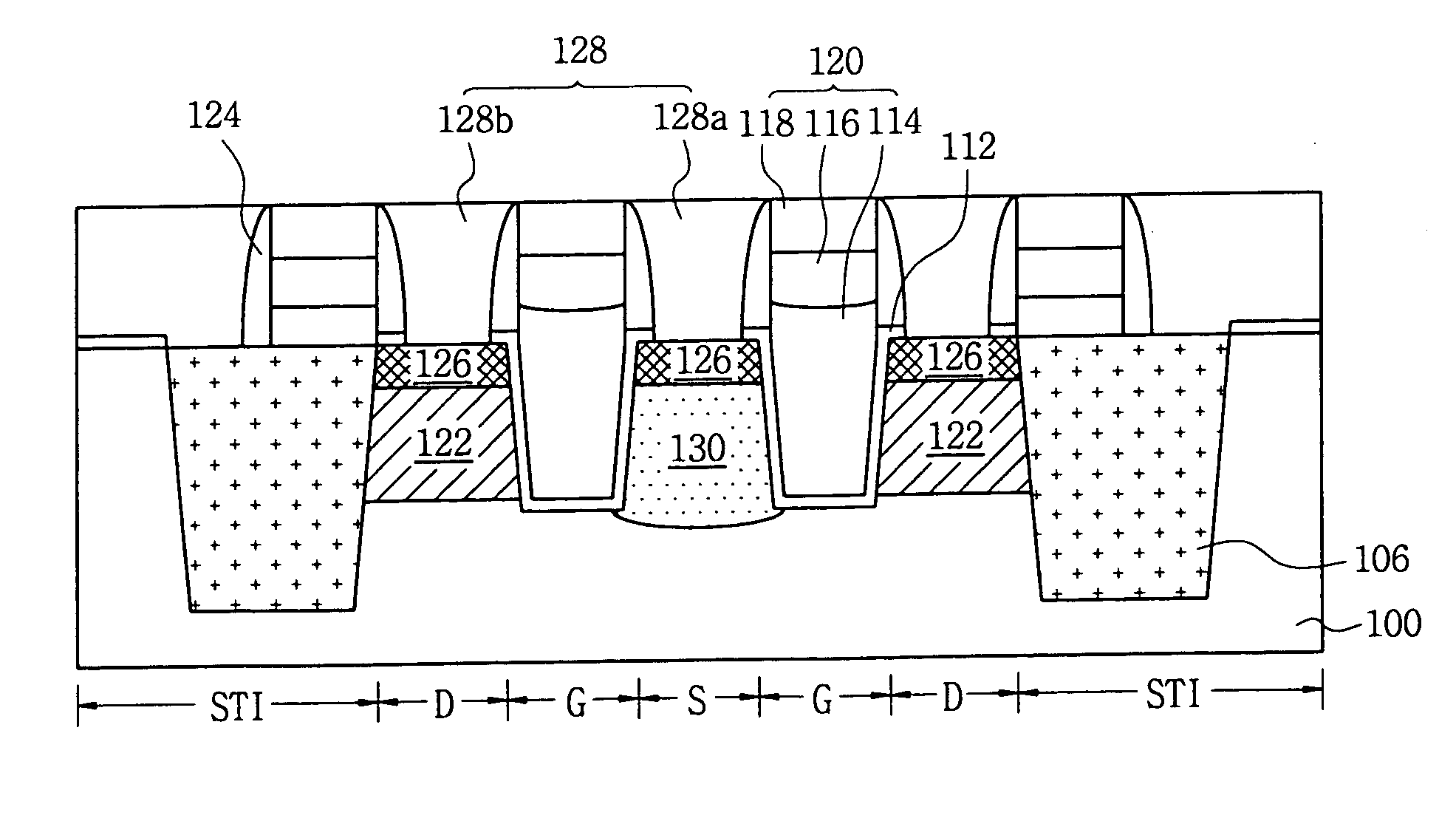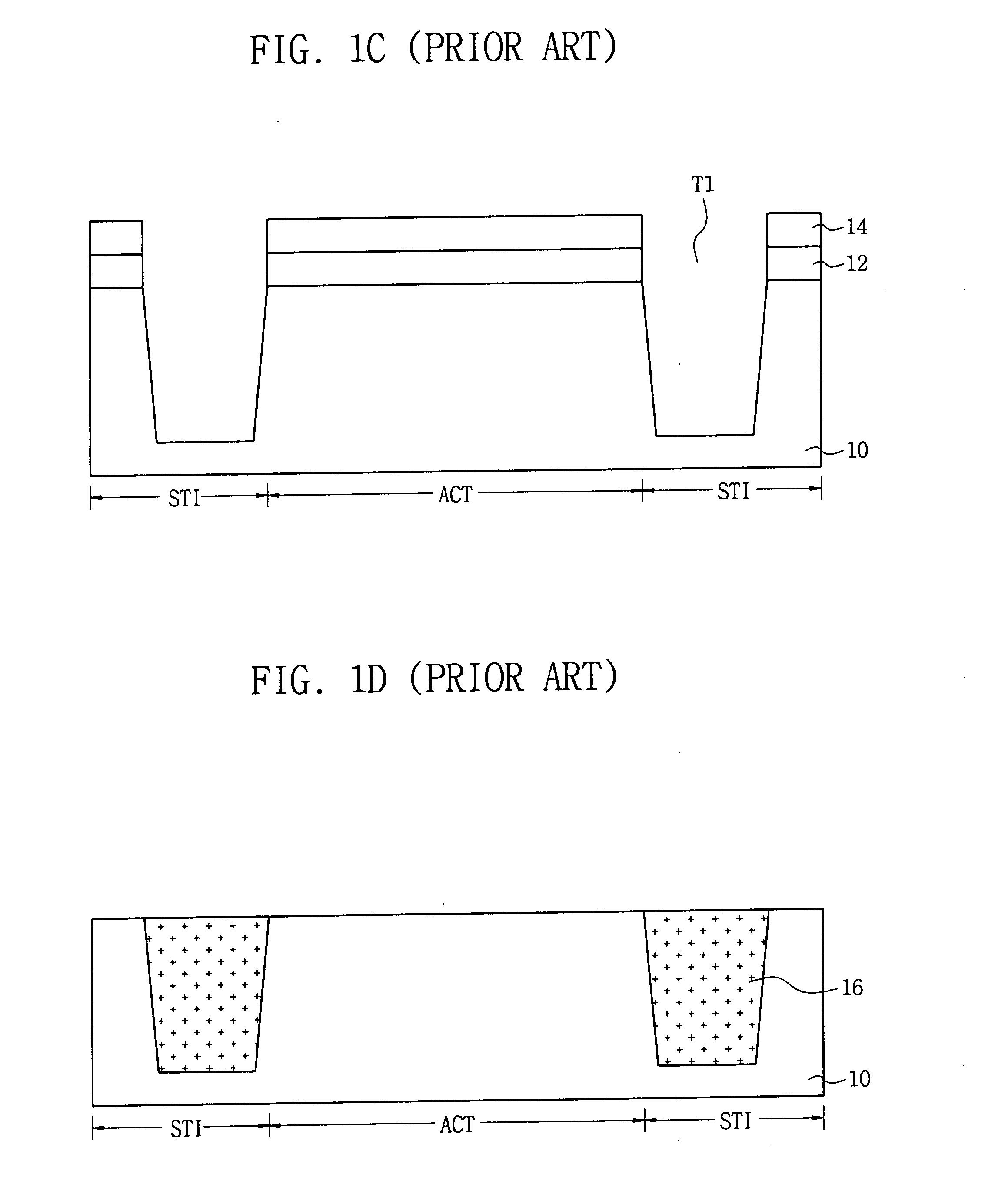Asymmetric MOS transistor with trench-type gate
a technology of trench-type gate and mos transistor, which is applied in the field of integrated circuits, can solve the problems of short channel effect, reduced effective channel length, and degraded gate dielectric by hot carrier injection, and achieve the effect of lengthening the channel
- Summary
- Abstract
- Description
- Claims
- Application Information
AI Technical Summary
Benefits of technology
Problems solved by technology
Method used
Image
Examples
Embodiment Construction
[0038]FIGS. 2A to 2R are cross-sectional views illustrating sequential steps for fabricating a MOS transistor having a trench-type gate with an asymmetric channel region, according to an embodiment of the present invention. Referring to FIG. 2A, a first pad oxide layer 102 and a first hard mask layer 104 are sequentially deposited on a semiconductor substrate 100. The first pad oxide layer 102 is formed to have a thickness of about 300 Å to about 1000 Å in an MTO (Medium Temperature Oxide) deposition process in one embodiment of the present invention.
[0039] The first hard mask layer 104 is comprised of silicon nitride or silicon oxy-nitride having a thickness of about 500 Å to about 2000 Å in one embodiment of the present invention. The first hard mask layer 104 is deposited during a chemical vapor deposition (CVD) process in one embodiment of the present invention. Though not shown in the figures, the present invention may also be practiced with a molding polysilicon layer formed ...
PUM
 Login to View More
Login to View More Abstract
Description
Claims
Application Information
 Login to View More
Login to View More - R&D
- Intellectual Property
- Life Sciences
- Materials
- Tech Scout
- Unparalleled Data Quality
- Higher Quality Content
- 60% Fewer Hallucinations
Browse by: Latest US Patents, China's latest patents, Technical Efficacy Thesaurus, Application Domain, Technology Topic, Popular Technical Reports.
© 2025 PatSnap. All rights reserved.Legal|Privacy policy|Modern Slavery Act Transparency Statement|Sitemap|About US| Contact US: help@patsnap.com



